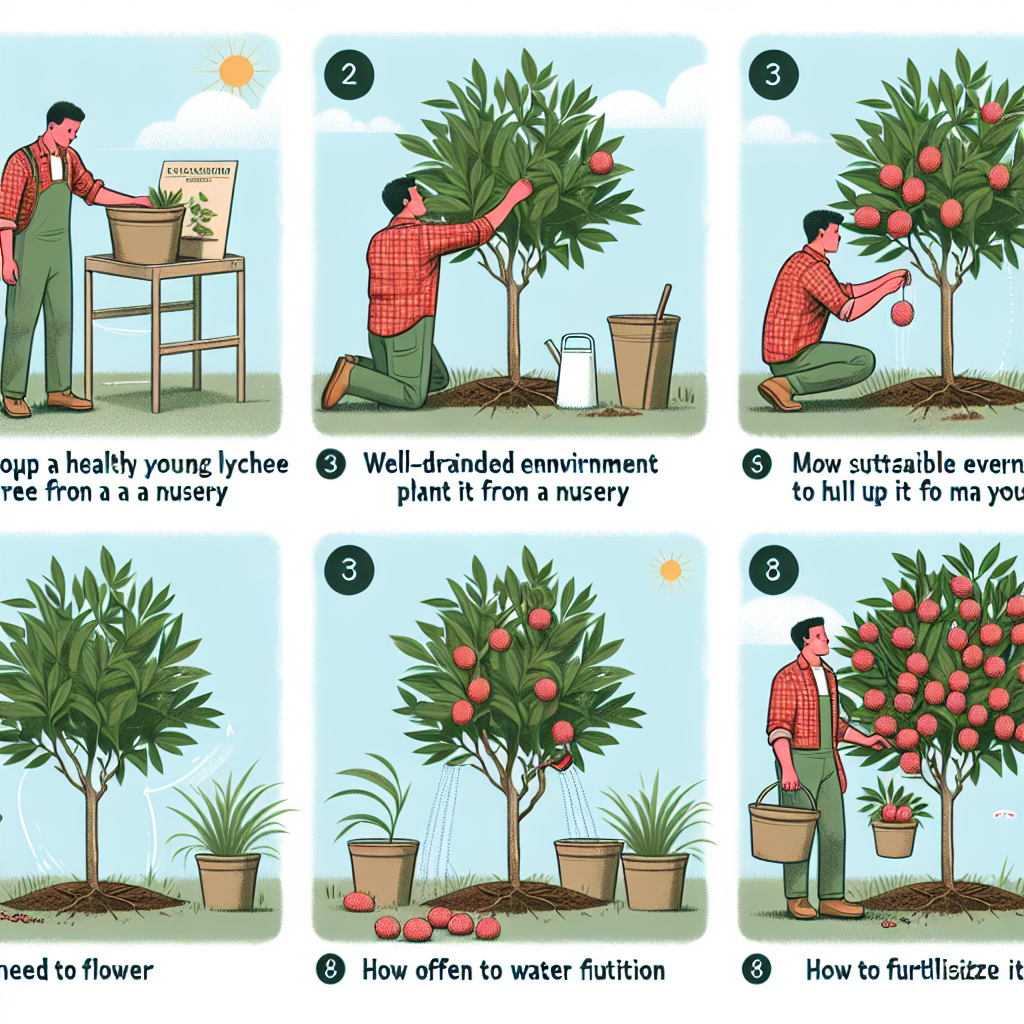
How to get lychee tree to fruit
Understanding the Lychee Tree
The lychee tree, scientifically known as *Litchi chinensis*, is a tropical fruit tree admired for its sweet and juicy fruit. Native to Southeast Asia, lychees are now cultivated in several warm regions globally. If you have a lychee tree and are eager to learn how to encourage it to fruit, you're in the right place. This article will delve into the best practices for nurturing your tree to achieve a bountiful harvest.
Understanding Lychee Trees and Their Growth Habits
Before discussing how to encourage fruiting, it's important to understand the growth habits and needs of the lychee tree. Here are some key points:
- Climate: Lychee trees thrive in warm, tropical climates. They prefer temperatures between 80°F and 100°F (27°C to 38°C).
- Soil Requirements: These trees favor well-draining, sandy loam soils that are rich in organic matter.
- Watering Needs: Adequate watering is crucial, especially during the dry season, but avoid waterlogging as it can lead to root rot.
- Pruning Practices: Regular pruning helps to manage the tree's shape and promotes airflow, reducing the risk of disease and improving fruit production.
Factors Influencing Fruiting
Fruiting in lychee trees can take time and is influenced by several factors. Below are some considerations to keep in mind when trying to get your lychee tree to produce fruit:
- Aging: Young trees typically do not bear fruit. It can take 3-5 years for a grafted lychee tree to start producing.
- Pollination: Lychee trees are usually self-pollinating, but they may require the assistance of bees and other pollinators.
- Temperature Fluctuations: Lychees need a cool, dry period to initiate flowering, typically occurring in winter. The right temperature fluctuation is important to trigger this phase.
- Fertilization: Proper nutrition is critical, as lacking nutrients can delay or reduce fruiting.
- Water Management: Both overwatering and underwatering can stress the tree and affect its ability to fruit.
Steps to Encourage Your Lychee Tree to Fruit
If you are wondering how to get lychee tree to fruit, following these steps will greatly improve your chances of a successful yield:
1. Select the Right Variety
Not all lychee varieties are created equal in terms of fruiting. Some are more prolific than others. Popular varieties that are known for good fruiting include:
- Thai Hak Ip
- Sweetheart Lychee
- Brewster Lychee
Choosing a variety that is known for consistent yields can help to ensure success.
2. Nurture Your Tree with Proper Care
Proper care is essential for your lychee tree to reach its fruiting potential:
- Watering: Water your lychee tree deeply once a week during dry periods, ensuring moisture reaches the roots without waterlogging the tree.
- Fertilization: Use a balanced fertilizer during the growing season. Look for a fertilizer high in potassium, as this nutrient promotes fruit development.
- Mulching: Apply a layer of organic mulch around the base of the tree to retain moisture and suppress weeds.
3. Create the Right Environment
Lychee trees require specific environmental conditions to set fruit:
- Temperature Control: Ensure that your lychee tree receives a cool period of around 40°F (4°C) to 50°F (10°C) to promote fruiting.
- Pruning: Prune your tree to maintain shape and promote airflow, which can help reduce disease and improve sunlight penetration.
4. Monitor for Pests and Diseases
Regularly check your tree for signs of pests or diseases, which can hinder fruit production. Common pests include:
- Scale insects
- Aphids
- Fruit flies
Implement controls such as organic insecticides or introduce beneficial insects to manage pest populations.
5. Encourage Pollination
Even though lychee trees are self-pollinating, having a variety of flowering plants nearby can attract beneficial insects and improve pollination rates. Planting companion flowers can create a bee-friendly environment to help with natural fertilization.
6. Patience is Key
Finally, patience is crucial when waiting for your lychee tree to bear fruit. It can take several years for young trees to start producing their first harvest. Additionally, knowing that environmental conditions and tree health can affect fruiting timelines is important.
Signs Your Lychee Tree is Ready to Fruit
Once your lychee tree has gone through the necessary stages of growth and care, you may begin to see signs that it is ready to fruit:
- Flowering: In late spring, the tree produces small, fragrant flowers, which signal the beginning of the potential fruiting process.
- Fruit Set: If pollination is successful, small green lychee fruits will start to develop after flowering.
- Color Change: As fruits mature over the summer months, they will change in color, typically turning from green to a vibrant red or pink when ripe.
Conclusion
In summary, learning how to get lychee tree to fruit involves understanding the unique needs and characteristics of the tree while providing it with proper care and the right environment. By selecting the appropriate variety, nurturing your tree with care, encouraging pollination, and remaining vigilant against pests and diseases, you can enjoy the sweet rewards of your labor with bountiful lychee harvests in the coming years. Remember, patience is paramount, as fruitful years often come from years of diligent care and attention.
"Growing a lychee tree is not just about the end product; it’s also about the journey of nurturing and cultivating life."
By Guest, Published on October 12th, 2024